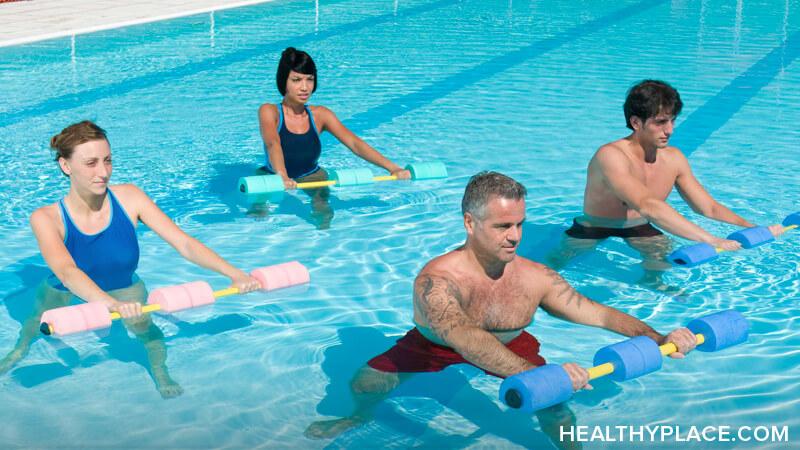Even Light Exercise Can Lower Anxiety

Exercise, even light exercise, can lower anxiety. Exercise has been shown to affect change in the brain that impacts anxiety immediately as well as over time. If you experience physical limitations that make exercising difficult, you can still move in ways that allow you to reduce anxiety and increase mental health and wellbeing.
The Benefits of Exercise Can Lower Anxiety
How can exercise lower anxiety? Well, you can feel exercise helping your heart as it pounds in your chest. You can feel exercise working your muscles as they stretch and contract. You can also feel exercise helping your brain as you feel a rush of energy, happiness, and even a lowering of anxiety and stress.
It's no wonder that exercise can lower anxiety. When you engage in intentional physical movement, many good things happen within your brain. Among the benefits of exercise on the brain and anxiety are:
- An increase in levels of endorphins and dopamine, parts of the brain's natural opiate center for decreasing pain and increasing positive feelings
- Creation of more serotonin, an important neurotransmitter in regulating moods, including anxiety and depression
- Regulation of cortisol, a stress hormone
- Increased production of brain-derived neurotrophic factor (BDNF), a protein active in multiple areas of the brain; inadequate amounts of BDNF can cause problems like anxiety
- A stabilizing of the sympathetic nervous system and the hypothalamic-pituitary-adrenal (HPA) axis, both systems that contribute to anxiety reactions
- Increased quality of sleep
Exercise lowers anxiety, too, by increasing self-efficacy, or the belief that you are capable of doing things. Activity builds resilience, improves thought processes, and keeps the body healthy, thus keeping physical symptoms of anxiety at bay.
However, what if you experience limitations that restrict your ability to exercise? Physical disabilities, chronic health conditions, illness, injury, and being out of shape can all inhibit exercise. If you live with physical limitations, you can still benefit from activity. Even light exercise can lower anxiety.
Light Exercise Helps Anxiety
Exercise is about being active every day (or almost every day). The activity you engage in can be mild. The key is to choose something you enjoy and that your doctor or physical therapist approves for you.
Some mild, anxiety-reducing activities include such activities as:
- Water activities like swimming, walking laps in a pool, or water aerobics
- Strength training, focusing on the area of your body that isn't injured or otherwise problematic and using very light weights or resistance bands
- Flexibility exercises like modified yoga or gentle stretching
Even light exercise keeps your brain healthy and functioning properly. The flow of oxygen to the brain increases, neurochemicals become balanced (and with regular practice stay balanced) and your subjective feeling of mental health increases. It's not the intensity of exercise that is important; rather, it's consistency that matters. With gentle, regular practice, light exercise can lower anxiety.
I invite you to tune into the video for more information on exercising with limitations.
Article Sources:
Anderson, Elizabeth & Shivakumar, Geetha. Effects of Exercise and Physical Activity on Anxiety. Frontiers in Psychiatry, April 2013.
Helpguide. How to Exercise if You Have Limited Mobility. Accessed August 2018.
Helpguide. The Mental Health Benefits of Exercise. Accessed August 2018.
APA Reference
Peterson, T.
(2018, August 2). Even Light Exercise Can Lower Anxiety , HealthyPlace. Retrieved
on 2025, December 19 from https://www.healthyplace.com/blogs/anxiety-schmanxiety/2018/8/even-light-exercise-can-lower-anxiety